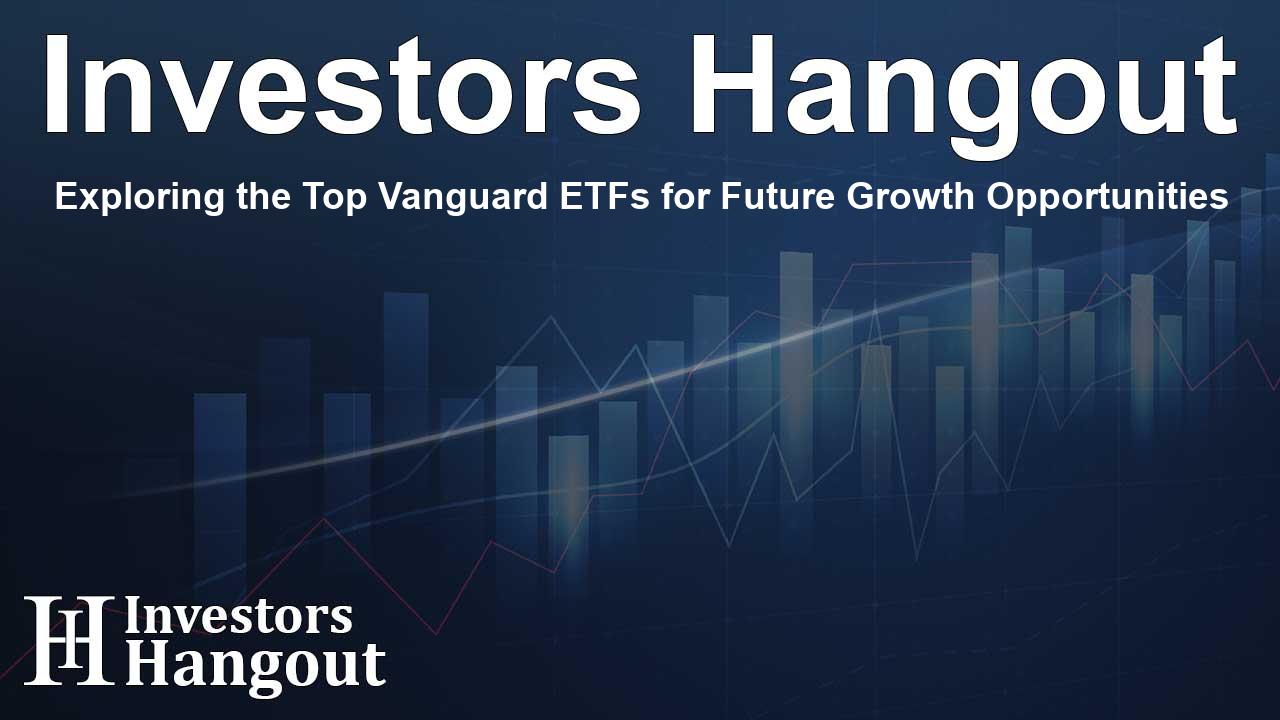Exploring the Top Vanguard ETFs for Future Growth Opportunities

Maximizing Investments with Vanguard ETFs
Exchange-traded funds (ETFs) present a unique opportunity for investment enthusiasts seeking a diversified approach in their financial portfolios. With a plethora of options available, it can be quite a puzzle for investors to identify which ETFs are truly worthy of their attention. Today, we dive into two standout choices that exemplify excellence in the ETF space.
Vanguard Growth ETF Overview
The first ETF on our radar is the Vanguard Growth ETF (NYSEMKT: VUG). This ETF is not only popular but also has a robust track record, especially appealing to those who favor growth stocks over value stocks.
Why Choose Vanguard Growth ETF?
This fund focuses on the fastest-growing stocks within the U.S. equity market. Notably, its portfolio is filled with prominent companies that investors often recognize, such as Apple, Microsoft, and Nvidia. The Vanguard Growth ETF also includes Amazon and Meta Platforms, highlighting its strong ties to the big tech sector.
Yet, it's not solely about tech. The ETF also comprises opportunities in retailers like Costco and companies in healthcare like Eli Lilly. While many of these growth-focused companies typically pay minimal dividends, the Vanguard Growth ETF has been a performance powerhouse.
Performance Insights
Over the past five years, investors have benefited from the impressive performance of the Vanguard Growth ETF, which has produced a total return close to 137%. To put this into perspective, a $10,000 investment in this ETF made roughly five years ago would now be worth about $24,000. This translates to a compound annual growth rate (CAGR) of 18.8%, surpassing the S&P 500's performance of 15.8% during the same period.
Cost Efficiency
In addition to its stellar performance, this fund boasts one of the lowest expense ratios in the industry at just 0.04%. This means that for every $10,000 invested, the investor pays merely $4 in fees annually, making it a cost-effective option for long-term investors.
Vanguard U.S. Quality Factor ETF Analysis
Next up is the Vanguard U.S. Quality Factor ETF (NYSEMKT: VFQY). This choice serves as an excellent complement to the growth-oriented ETF, catering to those who prefer a value investment strategy.
The Unique Approach of the Quality Factor ETF
Unlike many other ETFs that follow a passive approach, the Vanguard U.S. Quality Factor ETF is actively managed, allowing it to adapt to market conditions dynamically. Though it does maintain a reasonable expense ratio of 0.13%, it provides a well-structured approach to value investing.
Top Holdings and Strategy
The fund incorporates a quantitative method for selecting and weighting its stocks, ensuring a versatile and evolving portfolio. As of now, its leading holdings include recognizable names like Nike, Target, and 3M. The selection process identifies stocks that present solid value compared to their competition.
Performance in Perspective
While the Vanguard U.S. Quality Factor ETF has not outperformed the S&P 500 over the past five years, with a return of 94%, it still represents a worthwhile option for those interested in capturing value stocks. A $10,000 investment made five years ago would now be valued at roughly $19,500. Its CAGR of 14.2% demonstrates a solid performance in the value segment.
Investment Consideration for Vanguard ETFs
Making the choice between these two Vanguard ETFs ultimately boils down to individual investment goals. If your focus leans towards high growth opportunities, the Vanguard Growth ETF could be the perfect fit. Conversely, for investors who prioritize value and are interested in established brands, the Vanguard U.S. Quality Factor ETF merits attention.
As you weigh the options, keep in mind that diversifying your investments across both growth and value can create a balanced portfolio. The world of ETFs, especially those offered by Vanguard, presents a myriad of possibilities for shaping your financial future.
Frequently Asked Questions
What are Vanguard ETFs?
Vanguard ETFs are exchange-traded funds that provide investors with a way to gain exposure to various asset classes, including stocks and bonds, with low expense ratios.
How does the Vanguard Growth ETF perform?
The Vanguard Growth ETF has shown excellent historical performance, boasting a total return of around 137% over the past five years.
What are the main holdings in Vanguard U.S. Quality Factor ETF?
This ETF holds notable companies like Nike, Target, and 3M, focusing on securities that provide strong value characteristics.
Is Vanguard Growth ETF suitable for long-term investment?
Yes, the Vanguard Growth ETF is designed for long-term investors who seek capital appreciation through exposure to high-growth companies.
How do the expense ratios compare between these Vanguard ETFs?
The Vanguard Growth ETF has an expense ratio of 0.04%, and the Vanguard U.S. Quality Factor ETF has an expense ratio of 0.13%, both of which are relatively low.
About The Author
Contact Kelly Martin privately here. Or send an email with ATTN: Kelly Martin as the subject to contact@investorshangout.com.
About Investors Hangout
Investors Hangout is a leading online stock forum for financial discussion and learning, offering a wide range of free tools and resources. It draws in traders of all levels, who exchange market knowledge, investigate trading tactics, and keep an eye on industry developments in real time. Featuring financial articles, stock message boards, quotes, charts, company profiles, and live news updates. Through cooperative learning and a wealth of informational resources, it helps users from novices creating their first portfolios to experts honing their techniques. Join Investors Hangout today: https://investorshangout.com/
The content of this article is based on factual, publicly available information and does not represent legal, financial, or investment advice. Investors Hangout does not offer financial advice, and the author is not a licensed financial advisor. Consult a qualified advisor before making any financial or investment decisions based on this article. This article should not be considered advice to purchase, sell, or hold any securities or other investments. If any of the material provided here is inaccurate, please contact us for corrections.
